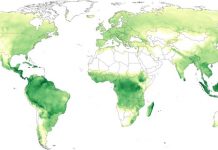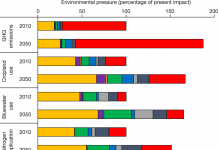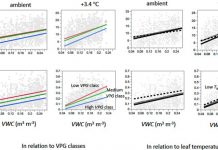【News】Jeff Tollefson. Megacities move to track emissions. Nature 2012 492: 20–21 doi:10.1038-492020a.
Scientists monitor greenhouse gases in urban areas as a first step to gauging success of climate initiatives worldwide.
【Research Highlights】Climate modelling Climate fingerprints. Nature 2012 492: 10–11 doi:10.1038-492010d.
The latest global climate models produce a ‘fingerprint’ that aligns well with actual temperature observations and underscores the human influence on climate through the release of greenhouse gases and ozone-depleting chemicals.
Ben Santer of the Lawrence Livermore National Laboratory in Livermore California and his group analysed simulations from 20 climate models at the core of the Intergovernmental Panel on Climate Change’s fifth assessment and compared the results with satellite temperature records dating back to 1979. The team found general agreement with observed global-warming patterns although the models typically overestimate warming in the lower atmosphere while underestimating cooling trends higher up in the stratosphere. The analysis suggests that climate modellers could improve model performance by incorporating more realistic treatments of ozone chemistry and aerosols.
Proc. Natl Acad. Sci. USA http://dx.doi.org-10.1073-pnas.1210514109 (2012)
Sean M. P. Cahoon Patrick F. Sullivan Gaius R. Shaver Jeffrey M. Welker Eric Post. Interactions among shrub cover and the soil microclimate may determine future Arctic carbon budgets. Ecology Letters 2012
Abstract
Arctic and Boreal terrestrial ecosystems are important components of the climate system because they contain vast amounts of soil carbon (C). Evidence suggests that deciduous shrubs are increasing in abundance but the implications for ecosystem C budgets remain uncertain. Using midsummer CO2 flux data from 21 sites spanning 16° of latitude in the Arctic and Boreal biomes we show that air temperature explains c. one-half of the variation in ecosystem respiration (ER) and that ER drives the pattern in net ecosystem CO2 exchange across ecosystems. Woody sites were slightly stronger C sinks compared with herbaceous communities. However woody sites with warm soils (> 10 °C) were net sources of CO2 whereas woody sites with cold soils (< 10 °C) were strong sinks. Our results indicate that transition to a shrub-dominated Arctic will increase the rate of C cycling and may lead to net C loss if soil temperatures rise.
Scott C. Stark Veronika Leitold Jin L. Wu Maria O. Hunter Carolina V. de Castilho Flávia R. C. Costa Sean M. McMahon Geoffrey G. Parker Mônica Takako Shimabuku







